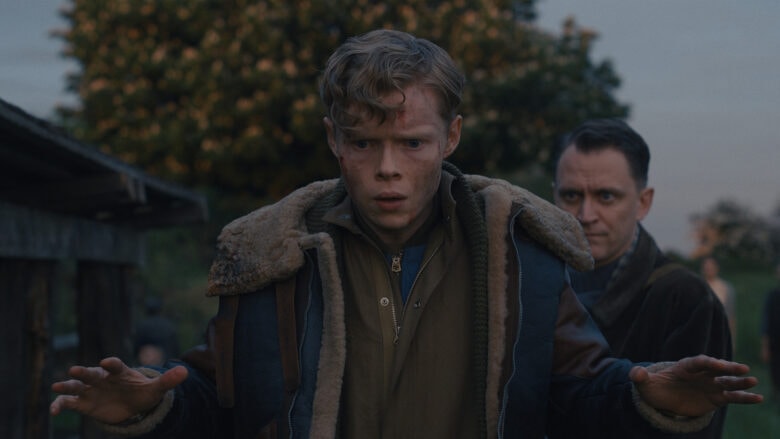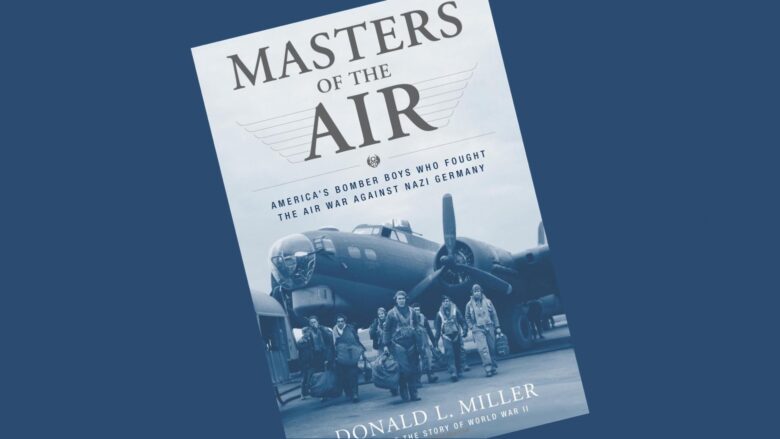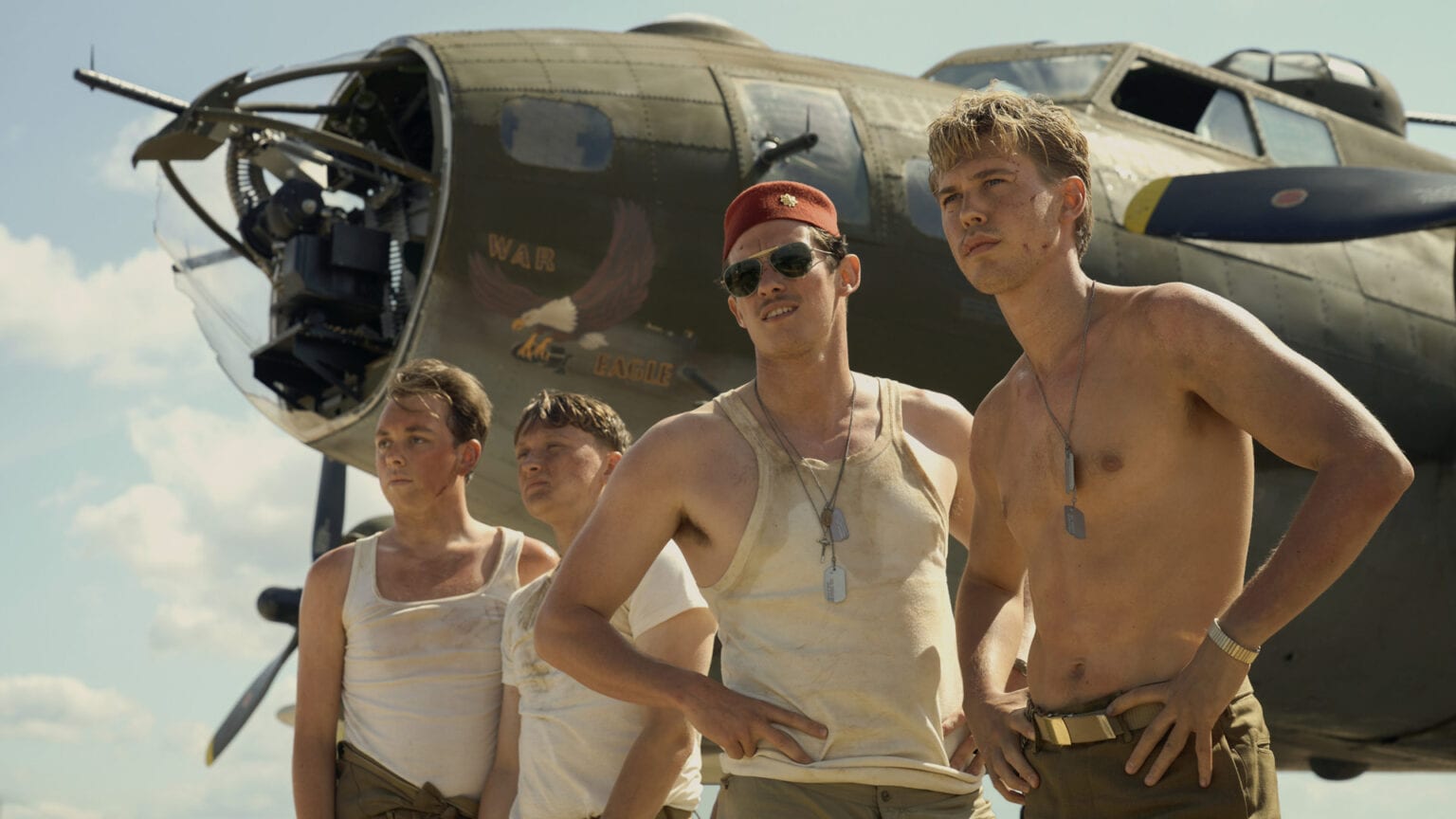When I was a kid, I had a thing for historical aircraft. I especially loved the smooth lines of the B-17 Flying Fortress bomber. And it played a big role in ending World War II, as shown in Masters of the Air on Apple TV+, the final installment in Steven Spielberg, Tom Hanks and Gary Goetzman’s World War II filmmaking trilogy.
Despite massive challenges, the plane and its crews’ strategic bombing helped bring down Adolf Hilter and the Nazi regime, shortening a horrific ground war.
And yet as good as the series is, sometimes it lands just short of the runway, like a beat-up B-17 losing its landing gear and grinding to a halt. Will it blow up? Maybe, maybe not. But is Masters of the Air worth watching? Hell yes.
This post contains affiliate links. Cult of Mac may earn a commission when you use our links to buy items.
3 reasons to watch Apple TV+ series Masters of the Air
With four episodes in the can so far, Masters of the Air depicts the horrifying ballet of aerial combat in WWII that killed and mangled so many airmen on B-17 Flying Fortress bombers. It’s another view of the fog of war depicted in the same producers’ previous series on HBO, Band of Brothers and The Pacific.
Masters of the Air premiered on Apple TV+ last month, and its popularity became immediately apparent. And yet I had to ask, is it as good as Band of Brothers and The Pacific? My answer is no, not quite.
Despite the show’s thrilling visual accomplishments, aerial combat is more remote and alienating than the ground fighting those shows and other war movies typically depict.
An alienating distance
How can that be? Well, for a huge amount of the show, characters are crammed inside cramped airplanes. So the action in the sky doesn’t focus so much on the people as it does on the special effects needed to make the combat realistic, with German fighter planes and exploding flak ripping across the sky at 20,000 feet.
At that elevation, everyone wears masks to breathe. So you can’t see their faces well. Hollywood films have always struggled with this, like the classic 12 O’Clock High starring Gregory Peck. It depicted the same “Bloody 100th” bomb group as Masters of the Air.
And how many flyable B-17s do you suppose still exist? (According to Simpleaircraft.com, the answer is six, with five in the United States and one in the United Kingdom.) So the filmmakers had to create the effects of those bombing missions showing hundreds of the planes, often called “forts” or “ships” by their crews.
And then the planes are inevitably blown out of the sky. In reality, airmen often didn’t end up flying with the same crews on the same B-17s, so it’s harder to follow them like you would in other war stories. In this story, the rag-tag odds and ends of the 100th kept flying any way they could.
Interestingly, when the 8th Air Force started flying sorties in 1942, it operated on the assumption anti-aircraft guns couldn’t shoot as high as a B-17 could fly and no fighter plane at the time could match its speed (25,000 – 30,000 feet high and a maximum speed of about 440 kph/273 mph). But that soon changed. And then some.
A million ways to die in the sky … and suffer on the ground

Photo: Apple TV+
The 10 men in each tin-can bomber flying at about 20,000 feet suffered frostbite and unbreathable air, like climbers on Mount Everest. They wore masks to breathe because cabin decompression didn’t yet exist. In the early months of the campaign, men lost fingers and other extremities. And those flimsy O2 lines broke as flak and machine-gun fire penetrated the ships. Under that stress, life support often didn’t hold, and neither did the men’s sanity.
During the war, the Germans kept making faster and more deadly fighter planes, including the first jet fighters. The Messerschmitt Me 262 almost ended everything, flying at 540 miles per hour and firing rockets. And yet it came too late, thanks in part to Allied bombing of manufacturing plants.
Under the withering fire of German planes and flak from guns below, many bombers came apart and American airmen bailed out with their parachutes at their pilots’ orders, risking capture over enemy territory. Some escaped. Others weren’t so lucky. The series shows some of those stories, including some horrific prisoner-of-war tales.
In fact, one of those POW tales in the book the series is based on is so horrible it’s hard to believe it will even appear in the show, but some version of it might.
Masters of the Air: 3 reasons to watch

Graphic: Simon & Schuster
In addition to having the highest numbers of fatalities, the U.S. Army Air Corps in WWII competed only with submariners in terms of who faced more psychological damage. And while that’s interesting, it might be too interesting for some not willing to commit to hell, so to speak. That’s war.
Here’s why those who can take it should watch Masters of the Air:
1. You can’t resist the rapid heart rate that modern war filmmaking provokes
If you watched Spielberg’s film Saving Private Ryan or the series Band of Brothers, you’ve seen the realistic sense of warfare they provide through modern filmmaking techniques. This was long before Vision Pro’s immersive experiences. Yet you have a sense of every pebble dancing as a 10-ton tank passes. When a 50mm machine gun round hits nearby, you flinch. Every explosion proves temporarily deafening.
Like the other Spielberg/Hanks WWII series, Masters of the Air doesn’t soft-pedal war’s brutality. You are with these boys in the air and you might puke up there, thanks to the same motion sickness they experience. You know the aircraft could blow apart at any moment.
In one passage, the ballet in the sky proves so transfixing it takes a second to realize large parts of planes are falling straight down and scores of men are dying. And then one airman, loose from his “fort” for unknown reasons and without his parachute deployed, collides with a wing that cuts him in half as that plane’s pilot watches, helpless to do a thing.
2. You’re interested in actual history as much as action
Part of the beauty of Masters of the Air is that it’s based on a history book,
Both the book and the series show how ideas pushed by proponents of high-altitude daylight bombing failed, at least at first. The English bombed city centers at night, killing thousands of civilians in hopes of cowing the Germans into surrender. The Americans insisted on trying to target only strategic military and industrial targets by day with the Norden bombsight (a hugely important and classified development), despite the horrific defenses and the toll they took on the 8th Air Force.
In the end, U.S. bombing produced a greater effect, according to the book. You have to take out the ball-bearing factories and railroad depots, right? That guts the war machine.
3. You want an emotional story, too
This is one area where Masters of the Air stalls out a bit in its first three episodes, with so much emphasis on aerial combat and scant hints at the emotional lives of the men. Episode 4 goes further afield emotionally, however, and upcoming episodes probably will, too.
Among the main characters, we meet pilot Major Gail Cleven (played by Austin Butler, the heartthrob actor who played Elvis in a recent biopic) and his best pal, Major John Egan (Callum Taylor). They go by the nicknames Buck and Bucky. You’re meant to care about them and their friendship more than the show can make you care, frankly.
And then there are the rest of the boys on any of the shot-up forts. They lived, they died and you end up wishing more of them were as important to this story as they were to the war effort. You get to see them joke around and dance on base with English girls, who prized the Yanks for their natty uniforms and bigger paychecks than RAF flyers, according to the book. But you may find yourself wishing for more female cast members with larger roles.
Most of the characters in the film were actual airmen, though some were pieced together from various people, just as the filmmakers sometimes did with the paratroopers shown in Band of Brothers and Marines fighting on islands in The Pacific. The Spielberg/Hanks team did them right overall, and we thank them and the servicemen depicted.
Watch Masters of the Air on Apple TV+
The first four episodes of Masters of the Air are streaming now on Apple TV+, which is available by subscription for $9.99 per month with a seven-day free trial. You can also get it via any tier of the Apple One subscription bundle. For a limited time, customers who purchase and activate a new iPhone, iPad, Apple TV, Mac or iPod touch can enjoy three months of Apple TV+ for free.
After launching in November 2019, “Apple TV+ became the first all-original streaming service to launch around the world, and has premiered more original hits and received more award recognitions faster than any other streaming service.”
In addition to award-winning movies and TV shows (including breakout soccer comedy Ted Lasso), Apple TV+ offers a variety of documentaries, dramas, comedies, kids shows and more.
Correction: Initially this article referred to B-17’s maximum speed of 440 mph, but that should have been converted from kph (kilometers per hour). Also note performance varied during the war with different versions of the plane in use.



